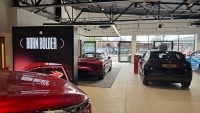by Nick Evans, the marketing practice director at Jaywing, takes a look at the tools and techniques dealerships can use.
Consumers are typically loyal to a brand of car, attracted to certain styles, functionality and performance. However, it’s usually a different case for dealerships, who are often simply viewed as a platform for finding the desired brand of car.
For dealers, this can mean there is less opportunity to build customer loyalty and greater propensity for the customer to shop around to find the best price. To combat this, dealers need to instigate the right customer service and data strategy from the outset to help make sure customers return time and time again.
The first step towards a customer-centric approach is to align data collection to the sales process. However, the challenge for dealerships is that the customer relationship is often held by the sales representative. This can be overcome by developing an early customer contact programme, outside of the sales representative’s relationship, to build a direct connection with customers and to know the right moment to target them with particular products and offers.
The crux of any customer contact programme is a strong data strategy. Dealerships have many different systems that collect all-important customer information. It’s important to unify the different data sets, from transactional data (when did the customer make a purchase) through to the delivery details (when will the car be delivered).
Identifying these vital pieces of information allows the dealership to know when and how to communicate with customers about auxiliary products or services, and target them with a new product later down the line when they are ready to consider another car purchase.
After purchase, there can be a long wait before the car is delivered – sometimes the wait can be many months. And, while waiting for their car, customers often dwell on the large price tag and are unlikely to want to spend more money. This is why it’s so important to have the transactional data to hand, including when the purchase was made. This way, the dealership has an insight into the point when customers are more likely to spend money on extra items like a roof rack or service pack.
Once the dealership knows when to target the customer, they can develop a plan of how to communicate and engage with that individual.
Many dealerships prefer to use email marketing to connect with customers without being reliant on the sales representative. These communications should be data driven; targeting customers with relevant products at the right time to help drive that final purchase. Delivering more relevant communications also builds loyalty, by making sure the customer is not bombarded with irrelevant and untimely communications that only serve to drive them to a competitor.
One approach that has proved successful is to create a countdown to product delivery, identifying points in this time frame when the customer’s mindset changes and they are likely to consider additional add-on purchases.
When interacting directly with customers, it’s important for dealerships to try to work in tandem with car manufacturers. The manufacturer will be collecting their own data and communicating with customers regularly to build brand advocacy. Often, much of this communication takes place offline, through expensive postal packs. By working closely with manufacturers, dealerships can help eliminate any duplication that could irritate the customer and can also identify opportunities and gaps to up-sell products and services.
The main barrier facing dealerships when they look to adopt a customer-centric approach is the cost of implementing and maintaining a watertight data system. As the systems collecting data within dealerships generally only serve operational purposes, the challenge is to bring them all together into a single customer view.
One way of avoiding the excessive costs often associated with such a feat, and to avoid burdening staff with yet another system to maintain, is to automate the data feeds that come from the various operational databases and into a single customer view.
Implementing a data strategy that captures information right from the beginning of the customer lifecycle has enormous benefits. In general, customers tend to purchase a new car every three to five years and by knowing when they last made a purchase, dealers have the insight to engage in the future. And when that purchase has been made, knowing when the right time is to offer additional products and services can help drive revenue.
Adopting a successful customer contact programme helps dealerships build a direct, long-lasting relationship. By getting customer communications right, dealers can turn customers into loyal advocates which in turn will reward the bottom line.

































